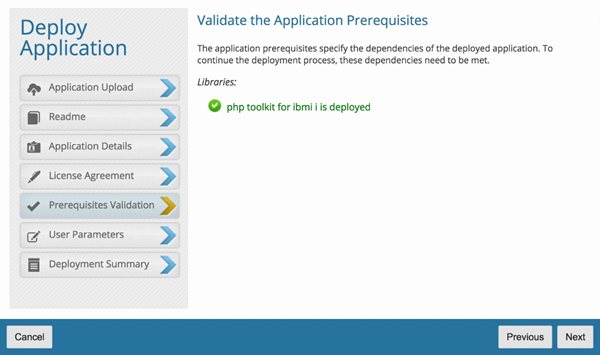PHP Enters a New Era
Jesse Gorzinksi discusses a recent development in the world of PHP on IBM i: standalone PHP (without Zend Server) is available in RPM form.
This past October, I had the pleasure of attending the php[world] conference in Washington, D.C. Just like I’ve seen at ZendCon in past years, the attendees were filled with enthusiasm and passion for their language of choice. During my visit, I learned about some of the enhancements in the latest versions of the language, as well as some really interesting developments in the ecosystem (for instance, the Amp non-blocking concurrency framework). Plus, Perforce—the owning company behind Zend—and IBM partnered to deliver a special day dedicated to IBM i (I use the word “partnered” loosely here, since Perforce did the bulk of the work)!

(PHP logo taken directly from https://www.php.net/download-logos.php)
Certainly, the PHP language is upheld by a vibrant community and has a bright future ahead of it. Personally, I would like to be more involved. Since my php[world] trip, I have managed to land on the agenda for Midwest PHP and Nomad PHP events.
PHP’s continued success is great news for IBM i shops. PHP has been on the platform for well over a decade, and it has powered a countless number of modern solutions. Given the number of solutions that are available, it’s safe to say that it will continue to be a staple for IBM i clients looking to innovate.
Today, I would like to discuss a recent development in the world of PHP on IBM i: standalone PHP (without Zend Server) is available in RPM form!
Why RPM?
Of course, the greater open source ecosystem on IBM i has also been growing the past few years, with IBM providing Node.js, Python, and hundreds of other tools. The newest innovations are delivered in the RPM format. While it’s quite different from the classic LPP/PTF approach, it provides a simple way to manage open source installations. To quote Alex Woodie in a recent IT Jungle article, “Having a free version of PHP that’s not tied to any particular support packages and is delivered via RPM and Yum is a great step that’s in-line with IBM’s stated goal of making open source pervasive and easy to use on IBM i.”
After all, open source has always been about choice. Now, one can use the ‘yum’ command-line tool (or, of course, Access Client Solutions) to manage their PHP installations in the same way they would with Node.js or Python. Alternatively, the Zend Server approach remains the tried-and-true option, with over a decade of history on the platform.
How does this relate to Zend Server?
First off, it’s important to understand what Zend Server is. It’s not just “PHP for IBM i.” Rather, a certified PHP stack based on the open source PHP runtime is one component of the Zend Server offering, which adds additional job management, ease of deployment, performance analysis, and much more. Those extra (proprietary) components bring the value-add that justifies the price tag of the Enterprise or Developer licenses.
Here are a few small examples (credit to Erwin Earley from Perforce).
Zend Server comes with an easy application deployment wizard:

Once an application is deployed, you can monitor for certain events such as memory usage and take actions based on those events.

It also comes with Z-ray, which can help with more advanced debug, performance diagnostics, and more:

Those using standalone PHP will be in more of a “roll your own solution” mode. For example, you may need to choose and configure an HTTP server. Or, you may need to follow a set of manual installation steps to install an application. Often, Zend Server makes these tasks easy, even for a web application novice.
It makes sense, therefore, to have both Zend Server and standalone PHP available for IBM i. It also brings IBM i into alignment with other platforms. Simply put, having these deployment options is “normal” in the PHP world.
How about Support?
Zend Server continues to have the same licensing and support offerings that have been available for years. But what about the standalone open source PHP runtime that’s now available? Good news: just like many other open source packages, you can get support for PHP from IBM Technology Support Services (TSS). See this document for more details. So, even with standalone PHP, you can deploy to production with confidence.
Looking into the future
As technologists, our jobs are interesting. Whether we realize it or not, part of our role is to predict the future. While we don’t have the proverbial “crystal ball,” we still need to predict which technologies are best to invest in. I’d say that PHP remains a safe bet. A huge portion of the Internet continues to run on PHP, and its capabilities and performance are consistently improving.
And it doesn’t stop there. I expect the IBM i community to see some exciting changes in the near future as well. For instance, there are some exciting enhancements to IBM i integration libraries in the works! Soon, you might also see some nice changes coming to Zend Server for i.
Interested in getting started with standalone PHP? The Perforce blog published a fantastic blog entry a couple weeks ago that you could definitely start with. As always, feel free to find the PHP forum and chat with us on Ryver (join here if you’re new). I look forward to PHP’s future success and would like you to be there for the ride. Heck, maybe I’ll even see you at php[world] later this year, or Midwest PHP in April in Minneapolis!